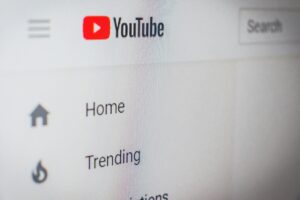Getting consumers to your website is no small feat. There are hundreds of thousands of businesses vying for the same audience at any given moment. Even locally, you are battling hundreds of businesses in and outside of your industry to get the attention of your consumers.
When a viewer finds your website whether it’s for the first time or the 20th time, you need to keep him there for as long as possible. Unfortunately, many businesses are driving viewers away without even knowing it. These are some of the common mistakes that businesses make on their websites that turn viewers off. If you’re guilty of one or more, don’t worry, we are also going to tell you what you can do to fix them.
- It isn’t mobile friendly
Now, more than ever, consumers are relying on mobile devices to browse the web, find local businesses and purchase goods. As a result of this trend, Google announced in 2015 that it was unleashing a major mobile algorithm that would actually penalize sites that were not mobile friendly. This algorithm is still in effect, making it nearly impossible to be truly successful online without a well-functioning mobile site.
So, what’s the fix? You have to bite the bullet and have your team or an outside designer make your site mobile friendly. Unfortunately, there is no work-around on this one.
- It takes too long to load
When it comes to loading time, every second counts. According to KISSmetrics, 47 percent of consumers expect a website to load in 2 second or less and 40 percent abandon a website if it takes longer than 3 seconds to load. It is obvious that consumers are not willing to wait for a sluggish site.
The first step to tackling this issue is periodically checking your site’s load time. If your site is consistently exceeding the 2 second goal, it’s time to rework your website so that it can handle common load time killers like traffic spikes and multiple downloads.
- There are too many pop-ups
Pop-ups are jarring. They interrupt the viewer’s experience and can become annoying and frustrating. The user’s experience should be as seamless as possible. Constant pop-ups that include aggressive calls to action simply aren’t the way to increase conversion rates.
That being said, when used in moderation, pop-ups can be effective. The trick is to use them sparingly and make them beneficial to the viewer.
- It features auto play content
Have you ever been startled by your computer suddenly talking to you? This most often happens when you visit a website that has videos that play without your knowledge or consent. The video doesn’t even have to be visible on your screen for it to begin playing. The viewer is left scrambling, trying to find the source of the noise.
The solution to this is simple. Make the video silent until the viewer decides to interact. You will see this solution employed on Facebook where videos begin to play, but they are silent until the user turns on the volume.
- The Contact Us form is the only mode of communication
There are times when an email just won’t cut it. Sometimes your consumer wants to talk to a living, breathing human being that can hear their tone of voice and understand their frustrations or share in their joy.
This issue is the easiest of all to fix. All it takes is providing your phone number, email address and links to social media channels on your website. Having all questions and requests coming through one avenue may be what’s easiest for you, but the consumer will appreciate being given the option to communicate with you using their preferred method.
The entire goal of your website is to provide the audience with information that entices them to choose you over the competitor. Don’t be a victim of common website no-nos. Make a few changes and make your site work for you and not against you.





